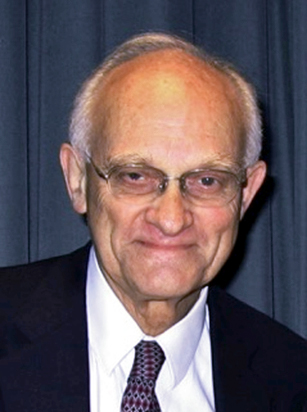- THE IASS
- Actors & Projects - Billington
In 1960, after having delivered occasional lectures at Princeton, Billington was invited to join the civil engineering faculty to teach structural engineering. He embarked on research with several graduate students, including studying thin-shell behavior by means of micro-concrete models. In 1965, he published the textbook Thin Shell Concrete Structures, which became the leading English-language design reference in this area over the next decades – and was followed by a significantly transformed edition in 1982. This transformation, which included more historical background, more photographs of actual shells and an introduction to structural art, is indicative of Billington’s expanded philosophy and approach that was born from seminal teaching experiences of the late 1960s.
It was the challenge of teaching graduate structural engineering courses for Princeton architecture students that provided the stimulus for Billington to dramatically enlarge the focus of his teaching, writing and research. Specifically, the architecture students vociferously asked why structures should be taught with stick figures of hypothetical structures rather than with real examples, especially aesthetically pleasing ones. As examples, they pointed out the concrete bridges of the Swiss engineer Robert Maillart that were featured in the book by Sigfried Giedion, Space, Time and Architecture. This spark ignited Billington’s long-lasting interest in Maillart that encompassed some of his books and exhibitions and that culminated with a definitive biography, Robert Maillart: Builder, Designer, Artist (1997).
More broadly, learning of Maillart’s skill and artistic expression was one stimulus that inspired Billington and his Princeton colleague Robert Mark to establish a program in Humanistic Studies in Engineering. A central goal of this program was to identify and study the best examples of historical and contemporary structural engineers and to synthesize the qualities of “structural art” and “structural artists”: The structural artist is responsible for establishing a rational form of the structure to serve its function safely and sustainably (efficiency), for minimizing the use of material while considering a feasible and appropriate construction method (economy), and for expressing aesthetic intent (elegance). Examples of those identified are Gustave Eiffel, Othmar Ammann, Christian Menn, Fazlur Khan, and a number of honored members of the IASS including Pier Luigi Nervi, Felix Candela, Anton Tedesko, Heinz Isler and Jack Christiansen. All of these, and many more, populate Billington’s writings, illustrated lectures, and art museum exhibitions. The designs of many of them have been the subjects of theses written by Princeton students guided by Billington or his colleagues, and the results of these studies enrich the scholarship and lectures on structural art.
Billington’s study and teaching of structural art reached full fruition with the development of the course “Structures and the Urban Environment.” First offered in 1974, it was intended for engineers and non-engineers alike. Because the course included laboratory and computation sections, it satisfied the science requirement for arts and humanities students. Within a short period, it became the largest and most highly rated course at the university, thanks to both its content and Billington’s dynamic and inspiring lecture style. Many students have described taking this course as a transformative personal experience, and as a consequence several changed their enrollments to civil engineering. Similarly inspired were the graduate teaching assistants. The result has been an extended following of colleagues and former students who have entered teaching, research, or design practice, spreading wide Billington’s influence and approach. Moreover, he generously shared the course materials with others interested.
In the 1980s, Billington extended this teaching approach to develop another new course, “Engineering in the Modern World,” intended to introduce the impact of civil, mechanical, electrical and chemical engineering on current American culture. This course has joined “Structures and the Urban Environment” as among the most successful and effective courses at Princeton University. Both courses continue to be taught today by Billington’s colleagues and successors and thus they remain a significant part of his legacy.
Billington’s honors and awards are too numerous to list fully here, but perhaps most significant are his elections as Member of the National Academy of Engineering (1986) and as Fellow of the National Academy of Arts and Sciences (1998). Three honorary doctorates, from Union College, Grinnell College and the University of Notre Dame, preceded the fourth and most symbolic: the Honorary Doctor of Science by his alma mater, conferred in 2015 to recognize the devotion of over 50 years service on the Princeton faculty with great distinction. Finally, Billington was also an honorary member of ASCE, ACI and the IASS.
Although Billington was active in the leading American civil engineering societies – for example, he served terms as chair of the ACI-ASCE Committee on Concrete Shell Design and of the ASCE Committee on Aesthetics in the Design of Structures – the IASS aligned particularly closely to his interests. He will be remembered for his several plenary lectures and papers delivered at IASS symposia; his research and consulting on concrete cooling towers found a natural home in Working Group 3; and he wrote the first two history chapters of the IASS Jubilee Book and was cited in others.
John F. Abel and Maria E. Moreyra Garlock
This text originally appeared as a Memorial Statement in the Journal of the IASS, Vol. 59 (September 2018) No. 3, pp. 169-170
THE IASS | JOURNAL INFO | TECHNICAL ACTIVITIES | MEMBERSHIP |
